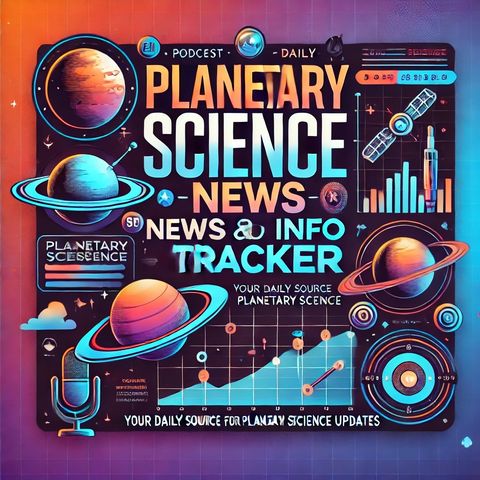Explore the Cosmic Wonders of the Solar System: A Halloween Treat for Astronomers

Download and listen anywhere
Download your favorite episodes and enjoy them, wherever you are! Sign up or log in now to access offline listening.
Explore the Cosmic Wonders of the Solar System: A Halloween Treat for Astronomers
This is an automatically generated transcript. Please note that complete accuracy is not guaranteed.
Description
Astrogeology explores the eerie and fascinating features scattered across our Solar System, each with a unique Halloween spirit. From ghostly landscapes to celestial "pumpkins," cosmic wonders abound that are both...
show moreOur first stop is Mars, where the aptly-named "Face on Mars" tricked many into believing in extraterrestrial life. Captured in 1976 by Viking 1, this rock formation in the Cydonia region appeared to resemble a human face, sparking numerous conspiracy theories. However, high-resolution images later debunked this myth, revealing it to be just another rocky terrain shaped by shadows and light.
Moving outward, we encounter the chilling beauty of Jupiter’s moon, Europa, which some scientists believe holds an ocean beneath its icy surface. This treat, in the form of potential extraterrestrial life, excites astrobiologists who dream of what secrets might lie beneath Europa's frozen shell. Its icy surface, marked by mysterious lineae, resembles a cosmic spider's web, a perfect trick for the Halloween season.
Saturn adds to the spectral ambiance with its hexagonal storm at the planet's north pole. This massive, six-sided jet stream is a baffling atmospheric phenomenon, measuring about 20,000 miles across. With its ghostly ambiance and perpetually stormy nature, Saturn's hexagon could belong to a planet in a cosmic horror tale.
One cannot overlook Saturn’s moon, Mimas, which eerily resembles the Death Star from "Star Wars." This small celestial body, pockmarked by a massive impact crater known as Herschel, offers a treat for science fiction fans who see the tricks of the universe echoing human imagination.
Pluto’s heart-shaped Tombaugh Regio, named after its discoverer Clyde Tombaugh, captivates with its bright icy plains adjacent to dark cratered terrains. While it exudes a charming and serene visage, the region presents the trick of challenging our understanding of geologic activity on distant dwarf planets that were once considered inactive.
The Solar System even boasts a pumpkin of sorts, with the asteroid 162173 Ryugu. This diamond-shaped asteroid, studied extensively by Japan's Hayabusa2 mission, has a rugged surface that mirrors the rough exterior of a carved jack-o'-lantern. Scientists gained precious samples from Ryugu, offering insights into the early Solar System's composition, making it a treasure trove of atomic treats.
Finally, no cosmic Halloween would be complete without mentioning Comet 67P/Churyumov–Gerasimenko. Its strange, rubber-duck shape and eerie landscape are captured by the European Space Agency’s Rosetta mission, leading to an unprecedented close-up view of a comet. This celestial body — constantly changing as it nears and recedes from the Sun — provides both thrilling insights and new mysteries, embodying the quintessential Halloween spirit of transformation.
As the boundary between cosmic tricks and treats blurs, these celestial bodies continue to beguile us with their haunting beauty and surprisingly playful characteristics. The Solar System is a cosmic canvas, painted with eerie phenomena and enchanting mysteries that capture the imagination and invite us to explore the universe's haunted yet wondrous nature.
Information
| Author | QP-4 |
| Organization | William Corbin |
| Website | - |
| Tags |
Copyright 2024 - Spreaker Inc. an iHeartMedia Company
